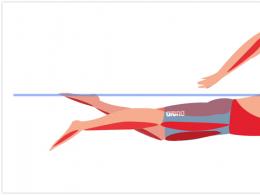A successful project to create an eco-farm in Russia. Rural tourism: life in the “eco” style It is more effective to carry out eco-farm procedures
Rosselkhozbank will help eco-farmers not only get back on their feet, but also create an effective agribusiness. For this purpose, Rosselkhozbank created the loan product “Become a Farmer (http://www.rshb.ru/smallbusiness/smsp/farmer/). The great thing is that it is a beginning farmer who is taking his first steps who can get a loan. You can get to loan for the development of your business in the amount of up to 15 million rubles for a period of up to 10 years. And at the same time, the farmer’s starting capital should be only 10% of the cost of the business creation project. Both in monetary and property form. There are many more various benefits and pleasant preferences on the Rosselkhozbank website, read carefully. The money will need to be returned to the bank, but it will be paid back from income from the sale of eco-products and tourism services. And you will still have an Eco-farm, which will bring a stable profit!
A farmer is not necessarily a man. Moreover, he is an eco-farmer. By the way, an eco-farmer can work himself, or he can be an organizer - that is, hire workers and create jobs.
Here is the algorithm of actions:
- You purchase a plot of land in the Suzdal Ecopark at a price of 2 thousand rubles per hundred square meters, a business format (with a ready-made business plan for an investment project), building materials, etc. This is your “starting capital”.
- Register a peasant farm (peasant farm) in the Suzdal Ecopark. To do this, you can have a residence permit anywhere, even in Moscow. The farmer is, first of all, the owner of the Ecofarm, the organizer of the production of bio-products. If you do not plan to permanently reside on the Ecofarm, you can hire a family of managers or transfer the Ecofarm to the management of a cooperative.
- You enter into a sales (supply) agreement for the purchase and sale of products with the agricultural marketing consumer cooperative "Ecofarmer" (sales justification for the bank).
- Become a participant in the departmental target program of the Ministry of Agriculture of Russia “Support for beginning farmers for 2012-2014” to receive a grant as state support in accordance with the program.
- The payback period for an Eco-farm with solar bio-vegetarian farming is 4-5 years, loan for 10 years. This means that we can build another Eco-farm from the profits. Place a family of managers there and your income will double.
- Apply for subsidies for part of the loan interest. This can reduce your loan burden by about 5% per annum.
- Build an Eco-farm and enjoy the useful and noble cause of producing eco-products and organizing green rural tourism.
In the photo: a creative approach to business in everything is the motto of a real eco-farmer.
What is unique about the Ecofarm with Solar Bio-Vegetary? Firstly, the first products are obtained within a week after its launch (forcing onions and greens, wheatgrass, sprouted grains, etc.). Secondly, it operates 365 days a year, which means the stream of profit does not dry up. And this is several hundred thousand monthly. Thirdly, you produce bio-products, that is, the best that can be offered to the consumer. Fourthly, you are guaranteed sales (tourists, cooperative). Fifthly, you are in the center of ecotourism, communicating with good people. Sixthly, there are wonderful people around you who will always come to your aid. Seventh, you are not standing at the market, your product is leaving the market. Eighth, you are trained in the most modern production methods and advised by the best specialists. Ninth, you own an agribusiness, the rate of profit of which allows you to buy it out in a short time. Tenth, you don't waste your precious time getting to work. Eleventh, every day your children receive lessons in labor, useful, constructive, creative... Should I continue?
Many tourists simply dream of returning to childhood, when they could easily milk a cow and drink fresh milk... Green rural tourism gives this opportunity to everyone. And what wonderful photo sessions against the backdrop of rural life await spoiled city tourists!
In the photo: now washing agricultural machinery is not what it used to be... Eco-friendly soap foam based on licorice (soap root) easily washes away any dirt...
An eco-farm, in other words, an autonomous, environmentally friendly private farm, is designed to meet the needs of modern man in a wide range. Of course, the main function of an eco-farm is to provide the family (in a broad sense) with products of its own production, the quality and composition of which you can be sure of. But besides this, spending time on a farm, away from the urban model of life associated with an increased rhythm, where stress is a normal state, where the system for obtaining material and life values is very complex, allows you to switch to a healthy state of thoughts, relax your nerves and raise your overall tone . And for children there is no substitute for village life.
In general, an eco-farm is a complex of buildings for various purposes for keeping animals, ensuring their health and reproduction.
The location for the eco-farm should be dry with a low groundwater level. In general, the entire territory of the farm should be slightly elevated in relief, with a natural slope for runoff of precipitation and melt water. Low places should be avoided, especially near swamps and various bodies of water with low banks. Buildings in such places, as a rule, are damp, which is one of the predisposing factors to the occurrence of animal diseases. It is advisable to locate the eco-farm away from roads and cattle trails (no closer than 2 km). There should be no cattle burial grounds or garbage dumps on the farm territory. When choosing a location, it is necessary to take into account all veterinary, sanitary and zoohygienic requirements in order to ensure reliable epizootic well-being.
Buildings must be mutually located in such a way as to most effectively serve all functional areas with minimal labor costs and the number of personnel. Also, for maximum efficiency of processes, equipment is selected and buildings are designed for the equipment and the number of animals. Under different construction site conditions, the layout of the farm will “adjust” to the terrain, transport routes, the location of existing systems and nearby residential buildings.
Technical block with staff premises.



Pigsty.

The pigsty is a building divided into blocks.
Block No. 1 carries out the reproduction of the herd; boars, queens, replacement gilts are kept here, and insemination of the breeding stock is carried out.
Block No. 2 - farrowing is received here and suckling queens with piglets are kept.
In block No. 3, piglets are raised after weaning and pigs are fattened.

Poultry house.


Rabbit farm.

Adults are kept in separate cages, inside of which there are feeding compartments, drinking bowls and a nesting compartment. The cages require periodic cleaning.
For young animals, cages are selected that consist of two compartments: one is for walking, the other is a shelter into which the young animals enter through special holes. The floor throughout the compartment is made of mesh. The cages are equipped with nurseries, feeders for concentrated food, supplements and drinking bowls.

Sheepfold.

Each adult animal in the pen must have at least 2.2 sq.m. floor area and 3.5 cubic meters. room volume. The floor area per ewe should be 2.5–3 sq.m. When keeping sheep, you need to take into account that these animals do not like dampness and drafts, so the sheepfolds should be warm, dry and spacious.
The sheepfold must be equipped with supply and exhaust or forced ventilation.
The project proposal presents a sheepfold for 10 - 15 sheep. The sheepfold consists of five sections. A vestibule, a technical corridor for personnel work, a technical room for equipment and inventory, a feed warehouse and a sheep pen itself, which can be divided into sectors by movable partitions.

Stall for large animals.

A vestibule, a passage for staff work, a technical room, a room for stocking food and a room for equipment. Since technologies for keeping cows and horses can be carried out in the same room, a cow can be kept in one section and a horse in another. The choice of system and methods of keeping animals depends on the production focus and natural and climatic conditions.
The area of an individual levada is approximately 200 square meters. m. The height of the levada fence should be 1.8–2 m. The material for the fence is metal pipes with a diameter of at least 7 cm in three rows or an edged board in three rows. It is unacceptable to use wire for this purpose. Although ordinary farms do not provide walking areas for working horses. The arrangement of the site remains at the discretion of the farmer.
The design and construction of stalls for large animals must be carried out taking into account the meteorological data of the climatic zone. Premises for keeping large animals must be well equipped, convenient for housing animals, and performing production processes. During construction, it is important to provide for all factors that contribute to ensuring a normal microclimate. Considering that heating systems are not used in rooms for large animals, you should rely on the heat generated by the animals. Therefore, it is necessary to select a building material with a high coefficient of thermal resistance; in this case, it is proposed to use wood as a material.
The most important element of a building is the floor. It must have low thermal conductivity and sufficient strength, be dry, waterproof and non-slip. An adobe floor is most suitable for the physiological characteristics of horses, but it requires constant care (timely removal of urine and feces, frequent tamping). From a hygienic point of view, wooden floors made of planks or an end floor made of oak blocks, pre-tarred, are good. Previously, brick floors were used quite widely, laid on edge in a herringbone pattern. In modern conditions, expanded clay concrete floors are most widespread because they are highly durable, quite warm and less expensive. In order to preserve heat in the room, the gates are equipped with vestibules.
If you like the idea of an eco-farm, but you don’t know where to start implementing it, take the time to think it over carefully (for example, on weekends or during the holidays) and in writing answer the question: " How do I imagine the end result??".
It depends on your answer family or collective eco farm, universal or focused on one product, etc.
When will the detailed answer be available? written, search online and try to find already existing in the world prototype of your future eco-farm. Don’t waste your time and don’t reinvent the wheel, because you can use the experience you’ve already gained and learn from the mistakes of others.
Try go to this eco-farm and look all with my own eyes, chat with someone who has already gone through the stages of creating and developing the eco-farm of your dreams. If possible - do some work there a month to better understand how it is structured and functions.
Planning
When you no longer abstractly, but really understand what you want, analyze your resources - human and financial, as well as the possibilities of attracting financing. Keep in mind that the project will be implemented for 3-10 years (depending on your desires and capabilities).
For convenience, divide the proposed activities for creating an eco-farm into stages by year. For example, the first year: planning the site, installing fencing, obtaining building permits, laying out a garden, pouring foundations, etc. Second year: laying an apiary, installing utility networks, drilling a well for water supply, etc.
Team Building or team formation
If you want to create family eco-farm, you will have to rely only on your own strength and the help of your family members. You can also hire individual specialists or companies to perform activities where you do not have expertise (for example, building a house). This will save you time (but not money), and the result will be better than if you did everything yourself.
If you plan to create collective eco-farm, even before searching and purchasing a plot of land, try form a team and distribute functionality/responsibility between participants. To search for future comrades, use the Internet - create project website, describe all the benefits of participating in it, as well as what specialists you are looking for. Don’t worry if a former artist agrees to take care of the apiary, and an engineer agrees to take care of the cows, because... all this can be learned.
Location, Location, Location...
When a rough work plan for creating an eco-farm has been written, you can begin searching for a plot of land. To make this task easier, try to put your plan into the form of a presentation - it may come in handy when you are looking for land for an eco-farm. The peculiarities of land legislation are such that local authorities often play an important role in the distribution of land plots. When meeting with regional government representatives, your presentation may be useful and play an important role in allocating land to you for the implementation of the project.
The most important role in the success of an eco-farm project is played by location land plot. It depends on how often you can go there at the first stage of development, whether you can ensure its safety, and how, after the project is completed, you can attract tourists, buyers to the eco-farm, or sell your surplus products yourself.
If something goes wrong, you can fix almost everything on an eco-farm - buy other trees, animals, rebuild buildings, etc. It will be almost impossible to change the location once you start implementing the project.
Try to find a plot of land located no further than 30 km from your current place of residence, a major city or a popular vacation spot. This will allow you to save on transportation costs at the beginning, and later attract tourists (as a rule, people are too lazy to go on an excursion if the journey takes > 30 minutes).
Pay attention to the presence of communications and natural resources on the site or in its surroundings: access roads, electricity and its power, water sources (rivers, lakes, streams), sewerage, forests, etc. Their presence or absence can have a serious impact on the budget of the eco-farm project.
Registration of land
Do not try to save money at the stage of registering ownership of a plot of land - engage a qualified lawyer who can check documents on ownership, the presence of encumbrances, and correctly draw up and register a purchase and sale agreement. Lawyer services usually do not exceed 1-5% of the cost of the land plot, but you will have peace of mind and will not incur losses by investing significant funds in the development of your eco-farm.
In the above article, I tried to briefly summarize the issues that may arise in the process of starting an eco-farm project. If something went unnoticed, I would appreciate your comments.
Next week we will look at the questions planning eco-farm land plot.
Investments in creating an eco-farm directly depend on the scale of the project. In some cases, 1 million rubles may be enough to organize a mini-production. Larger projects, such as the eco-farm of Alexander Konovalov from the village of Stepankovo (Shakhovskoy district, Moscow region), require financial investments of 30 million rubles.
According to the Research Institute of Nutrition of the Russian Academy of Medical Sciences, more than 50% of all diseases are associated with malnutrition and poor-quality products. Today, over 500 synthetic additives are allowed to be used in the production of animal and plant products. A huge number of low-quality products (up to 40%) enter our market from foreign countries. The issue of food security will be of enormous importance in the near future. The time will come when our Russian residents, like Europeans, will seriously think about consuming natural, environmentally friendly products.
In this regard, the forgotten market of environmentally friendly and safe products is gradually coming to life. A new wave of openings of modern eco-farms across the country is just around the corner. If there is demand, there will be supply.
Opinion of a real person
According to Alexander Konovalov, owner of one of the first modern eco-farms in Russia: “In order to achieve self-sufficiency, the project must be comprehensive. Ideally, a farmer should have everything of his own – raw materials, processing, delivery, retail and agritourism facilities.” The payback period in this case can range from 3 to 5 years.
But not only the production of quality products will help eco-farmers make money. Agrotourism is also a priority, especially when building a farm near large cities and metropolises, where the majority of the population is not familiar with agriculture at all, for whom all this is called “a novelty.” What can I say, in Europe, for example, more than 30% of the population prefer “green” tourism in their vacation.
Step-by-step plan for opening an eco-farm, where to start
It is better to place an eco-farm in an area remote from large cities and industrial zones. Ideally, this should be an area surrounded by forest, with a pond, pasture and good transport accessibility. The total area can be several hectares, with the prospect of expansion. The main principle of building an eco-farm is not to harm the environment and use exclusively natural raw materials and materials.
One of the main difficulties of building something remote from populated areas is the lack of engineering infrastructure. In most cases, you will have to install communications and create infrastructure from scratch. To design landscape architecture, it is better to resort to the services of experienced architects.
What premises are needed for an eco-farm?
An “ideal” eco-farm should contain the following blocks:
- Farm block - premises for keeping and raising dairy cows, a milking block, premises for raising meat breeds of cattle, pigs, poultry, rabbits, nutria and so on.
- Production and processing complex - a meat and dairy products processing workshop, a sausage and smoking workshop.
- Technical support unit - carcass cutting, finished product warehouse, utility rooms, garage for agricultural machinery and equipment.
- Housing and amenity block - staff house, administrative office, parking for agrotourists.
- Agrotourism block - mini-hotels for tourists, children's and sports grounds, a pond for fishing and recreation for tourists.
- Greenhouse block, garden and vegetable garden.
What documents are needed to open an eco-farm?
In order for the products of an eco-farm to be called “environmentally friendly”, it is necessary to obtain an environmental certificate of conformity. This document is issued by the certification body “International Environmental Fund”, accredited in the mandatory certification system for environmental requirements ROSS.RU.001.01.
Having received the right to label its products with an environmental mark of conformity and advertise its products in the media as environmentally friendly.
Such certification will cost about 2000 euros per year. To obtain a certificate, the production of products must strictly adhere to the requirements of “environmentally friendly products”. Thus, products must be obtained in an environmentally friendly area without the use of mineral fertilizers, pesticides and other chemical additives. Only natural raw materials should be used in production, with minimal contamination of other substances, and the products themselves must have a natural shelf life.
On eco-farms, it is prohibited to use antibiotics when treating animals - sick animals are immediately eliminated, since such products will no longer be considered environmentally friendly. That is why, by definition, eco-products will be more expensive (higher cost) than conventional products grown using intensive technology.
How much can you earn by opening an eco-farm?
Environmentally friendly products will always find their customers. At first, the clients of the eco-farm may be residents of surrounding settlements. For the most part, ecological products are consumed by people with above-average incomes. Information, as a rule, is disseminated through ordinary word of mouth.
With appropriate production volumes, it is mandatory to open your own retail stores, as well as an online store of eco-products. Prices for products obtained from an eco-farm are always higher than in retail chains. So, eco-milk will cost about 100-140 rubles per liter, a kilogram of boneless pork - 400-500 rubles, a kilogram of veal ham - 600-700 rubles.
Which equipment to choose
The choice of equipment depends on who you are going to support. For example, if it is a bird, then you will need incubators for eggs. And in the case of ostriches, you will have to purchase equipment for additional heating, since these birds are thermophilic. And in the case of cows, milking machines will be required.
Which OKVED code should I indicate when registering a business to open an eco-farm?
The choice of OKVED code, as well as the choice of equipment, depends on what kind of animals you are going to keep:
- Cattle – 01.21.
- Goats and sheep – 01.22.1.
- Pigs - 01.23.
- Bird - 01.24.
Which tax system to choose for registering an eco-farm
As a rule, beginning entrepreneurs prefer to choose the simplified tax system, as it makes their life much easier.
Do you need permission to open an eco-farm?
Permission, of course, will be required from the veterinary station. And also, your products will need to be periodically tested to receive a quality certificate.
Technology of cultivation, production, manufacturing
The technology of raising animals lies in their proper maintenance and proper care. After all, as we already know, an eco-farm has its own characteristics, and keeping animals is different from how animals are kept on conventional farms.





